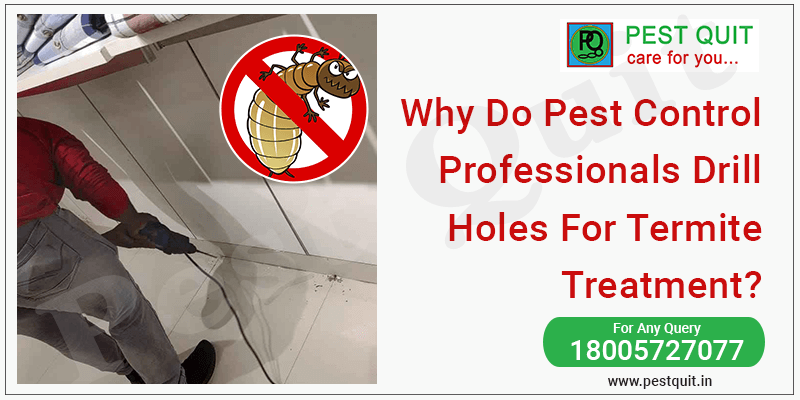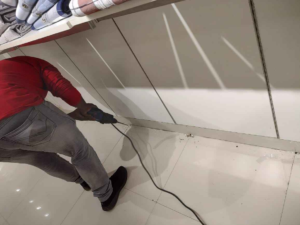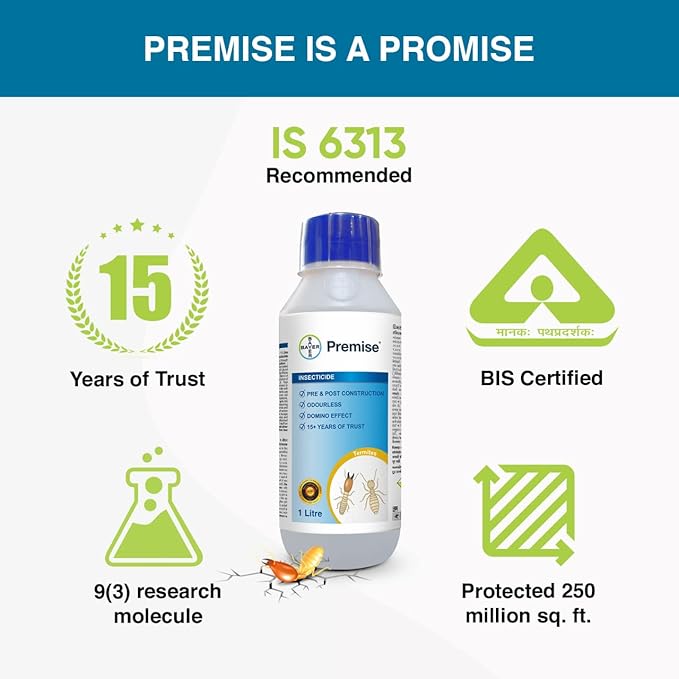Why Do Pest Control Professionals Drill Holes For Termite Treatment?

Table of Contents
ToggleHow Is Termite Treatment Carried Out?

Why Do Termite Treatment Professionals Drill Holes?
Filling Termite Treatment Holes
Using a Drilling Machine for Termite Treatment Holes
What are some alternatives to drilling holes to treat termites?
Tools Required for Anti-Termite Treatment Procedure
- Pressure Sprayer Pump
- Drilling Machine
- Hand Gloves
- Face Masks
- Safety Shoes
- Eye Goggles
Frequently Asked Questions (FAQ’S)
- Q. What is the drill fill seal method for termite treatment?
The drill fill seal method, also known as DRILL-FILL-SEAL technology, is a termite treatment method that involves drilling holes, injecting chemicals (termiticide solution), and sealing the holes to prevent underground termite infestation.
- Q. How does pest control work for termites?
Pest control for termites involves various methods such as baiting, liquid termiticides, and physical barriers. The most common method is the use of liquid termiticides, which are applied to the soil around the foundation of the building to create a barrier against termites.
- Q. Should I plug termite holes?
Yes, you should plug termite holes after treatment to prevent re-infestation. You can use wood putty, caulk, or other appropriate materials to close or repair the holes made in the wood by the treatment.
- Q. What angle do you drill for termites?
When drilling for termites, you should drill at a downward angle of 45 degrees to cover the complete area. The holes should be 6mm in diameter and 150mm center to center.
- Q. How do you drill anti termite treatment?
To drill for anti-termite treatment, you need a drill and a 6mm diameter drill bit. Drill holes every 8 to 10 inches along and into the infested wood. Fill the holes with the drywood termite insecticide product of your choice and close the holes with wood patch, putty, or other appropriate materials.
- Q. What is the best filler for termite holes?
The best filler for termite holes is wood putty or caulk. These materials can be used to close or repair the holes made in the wood by the treatment.
- Q. How do you block termite holes?
To block termite holes, you can use wood putty, caulk, or other appropriate materials to close or repair the holes made in the wood by the treatment. You can also use physical barriers such as stainless steel mesh or sand barriers to prevent termites from entering the building.
- Q. How deep to drill for termite treatment?
When drilling for termite treatment, you should drill at a depth of 12 inches on the ground and 4 inches on the upper levels along the inner junction. The holes should be 12mm in diameter and 20 inches apart.
- Q. How deep is a termite hole?
The depth of a termite hole depends on the species of termite and the location of the colony. Subterranean termites, which are the most common type of termite, build their nests underground and can create tunnels up to 100 meters deep.
- Q. What is the wall injection for termites?
Wall injection for termites is a method of treating termite infestation by injecting termiticide solution into the walls of the building. This method is used for both pre-construction and post-construction termite treatment.
- Q. How do you make walls termite proof?
To make walls termite proof, you can use physical barriers such as stainless steel mesh or sand barriers to prevent termites from entering the building. You can also use chemical barriers such as liquid termiticides, which are applied to the soil around the foundation of the building to create a barrier against termites.
- Q. How big are termite holes?
The size of termite holes depends on the species of termite and the location of the colony. Subterranean termites, which are the most common type of termite, create mud tubes that are about the width of a pencil.
Conclusion
Other Pest Control Topics You May Be Interested In
- Pest Control License – Eligibility, Procedure, Documents, Fees
- How Does Pest Control Work?
- Why Do Pest Control Professionals Drill Holes For Termite Treatment?
- Who is responsible for pest control when renting?
- Green insect that looks like a leaf: Nature’s mimicry
- How To Use Campure Camphor Cone?
- Homemade Rat Traps | DIY Rat Traps for a Rodent-Free Home




